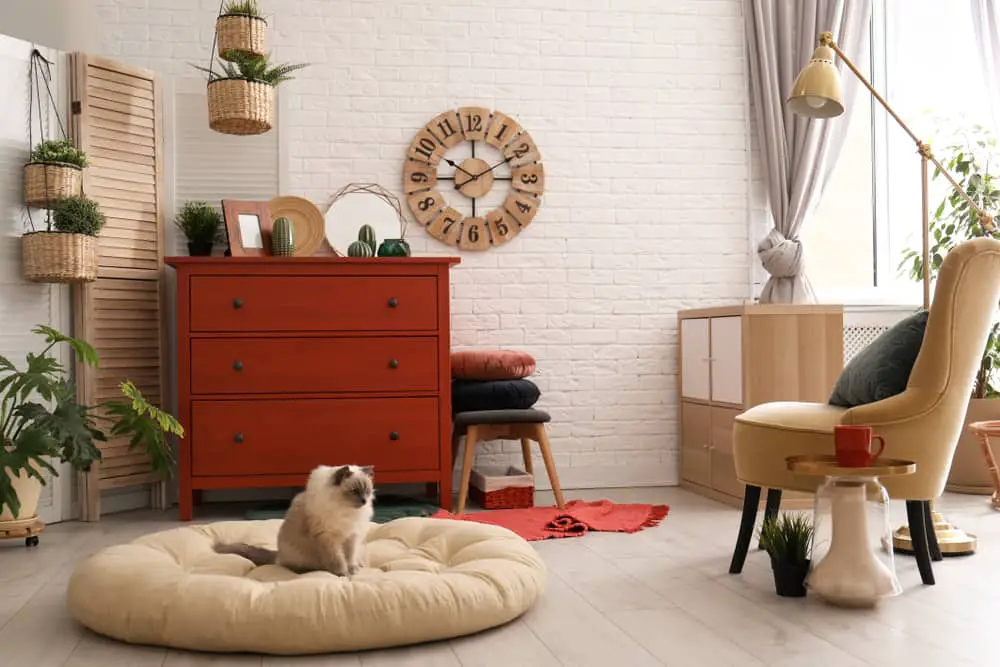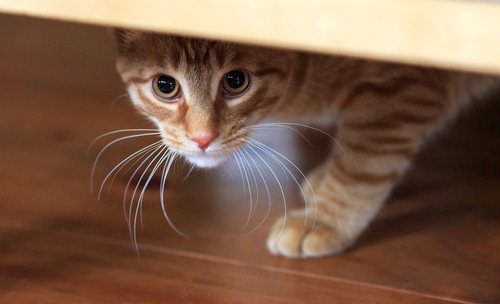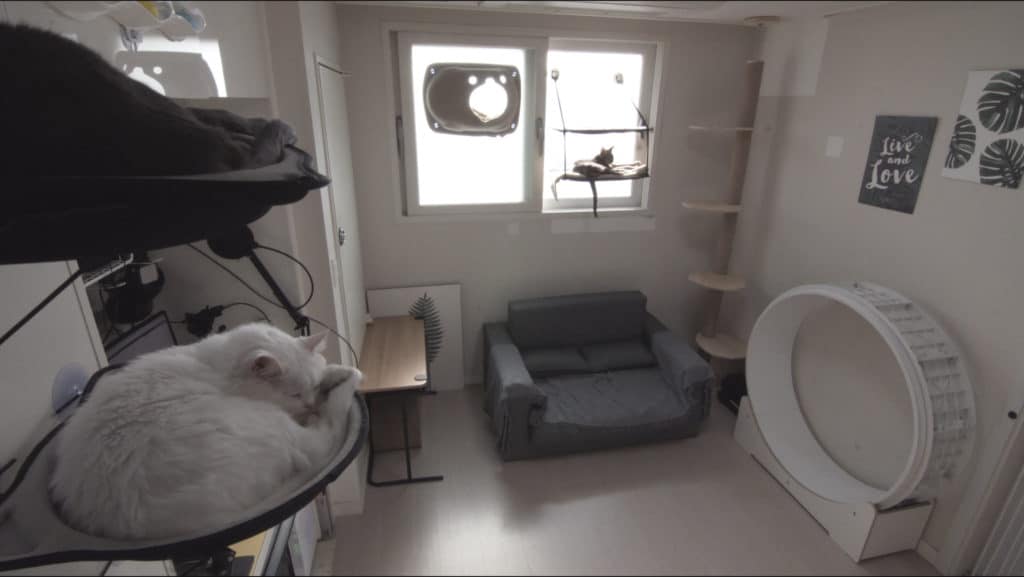Science and behavioral studies on cats have shown that cats are not the loners that were once believed. There are a lot of benefits that come with having more than one cat. However, as many cat owners know – the true answer is never as clear-cut, never one or the other.
While personally, I believe that cats do better with a companion but I also know that cats are individuals. Cat owners have the responsibility to observe and know their cat’s preferences. There are some cats that just do better alone.
If the resident cat is happy, behaviorally well-developed, and socially adapted, and you cannot get another cat because of finances, situation, or other personal issues – then don’t feel forced to add another cat to your home.

Whether or not it’s cruel to keep only one cat? It’s not cruel to keep one cat as long as that cat gets the attention it deserves. If the resident cat has good behavior traits, is healthy, active, and he/she receives and the environment is engaging enough – then having one cat is absolutely fine! Getting another cat can bring unneeded stress and anxiety to everyone if unprepared!
We all have our owns ways to create a better life for our cats and there’s always something to do to better as cat owners. Whether it’s creating new spaces for your cats to explore and play or have a routine for them to lead a more natural cat (active) lifestyle – there’s never only one way to engage our cats.
Can a Cat Be Happy Alone?
Cats are creatures like any other. They have ways that they can adapt to any sort of living situation but there’s one thing that cats all cats have in common. Whether it’s in a multi-cat household or in a single-cat home, there is no substitute for the interactions between the cat and its owner.
These interactions play a huge role in any indoor cat’s life because the main risk or problem that an indoor cat might have is boredom or the lack of environmental stimulation. This can lead to issues like obesity, lethargy, or exhibiting unwanted behaviors.
All cats have the instincts to hunt, an outdoor cat has a lot more opportunities to hunt and play than an indoor cat would. So if we are able to keep stimulation high for our cats indoors – through proper play techniques and catification.
So if we can provide this for our cats, they can easily be the only cat within the home.
As a quick summary of the specific things we can do to help our cats be more confident and socially developed cats (click on each point to go into more comprehensive guides in each):
- Routine for play and hunt
- Routine for meals and snacks
- Creating cat-specific areas (for burrowing, hiding, perching, or climbing)
- “Discipline” cats correctly
- Using the right toys and products properly
- Make everyday actions more engaging
Science and Studies of Multicat vs Singlecat Households
While it’s difficult to do a completely accurate scientific study of it, there are studies and statistics available to help us owners make their own decisions.
In a recently published study in 2020, about the influence of living in a multi-cat household on health and behavior in a cohort of cats from the UK, the conclusion was that it didn’t matter if the cats were living alone or in a multi-cat household – there was no evidence of association of health/behavior influences in a home with multiple cats vs single cat, but the relationship between cat-cat is important.

It also concludes that in a home with bad cat-cat relationships, it’s more likely there are negative interactions with the owner as well. So it stresses the importance of being able to introduce the cats properly or everyone in the home might have a bad experience.
Therefore, the ability to create positive associations between cat-cat and cat-human is an important skill to have before considering adding a second cat to the home. For a more comprehensive guide on cat introductions and how I introduce my cats within a week, read here!
When It Might Be Better to Keep One Cat (Single-Cat Household)
After working with cats for a long time, I have observed and experienced some interesting things between relationships between cats and other cats and cats and their humans. It has really allowed me to get to know all types of cat personalities.
Single-cat household pros:
- Don’t need to put in the effort to manage cat-to-cat relationships.
- Fewer cats mean less hair, smells, and litter tracking to deal with.
- Fewer toys, litter, and cat items that you might have to buy, therefore saving a little bit more in the bank (finances living with cats).
- Focusing and keeping track of one cat is a lot easier to do than trying to track multiple cats.
There was a really interesting case when I was fostering two cats from different litters. The introduction went well but one cat was obviously dominant and the other was still treading quite lightly around him. There was no hissing or any aggressive behavior but it was clear that there was some tension between the two cats.
Whenever I separated the two cats, the more timid one would finally let loose and be a lot more active than before. I would proceed to continue my usual positive association methods to try to get the cats to play with each other but still, there was not much progress in terms of their relationship.
When it came time for the dominant one to leave for its new home, the cat that was once timid became a lot more confident and incredibly playful. It was surprising to see. So I noted that and passed the information along to its new owner.
The lesson here is that even though most of the time we might think we know what’s best for our cats – sometimes it’s really up to them and they’ll let us know how they feel in the long run. If you feel that your current cat is perfectly happy as they are and they have the attention that they need – then there’s no rush or need to add a second cat.
When It’s Better to Have More Than One Cat (Multi-Cat Household)
Most owners will know when to add another cat to their home if they have been observing and know their cat enough. In general, energetic cats and usually male cats – do better with companions than without. Again, this is assuming that the introduction process is done well and the cats have a good relationship with each other.

Multi-cat household pros:
- Cats expend energy on each other – thus requiring less attention/effort from their owner to help them do it
- Companionship when their owner is not there
- Learning behavioral cues from each other
- Less likely to be bored (therefore, less likely to have destructive habits)
For example, when my Bengal cat was a kitten – he was just simply too energetic, and no matter how much I played with him, it wasn’t enough. Therefore, getting another cat for him to expend his energy on was the best thing I could do.
It really helped him curb his energy levels and prevent unwanted traits such as biting, scratching, or being destructive of stuff around him.
Whatever the case, sometimes giving a companion can sometimes be the best form of stimulation and enrichment that we can provide to our cat’s lives but only if – we’re able to manage relationships.

Interesting, does that mean female cats are more likely to be fine alone?
Yes! This is what I have found to be the case most often in my time dealing and learning about cats. I believe male cats benefit more from having a companion and female cats tend to be much more independent (usually).